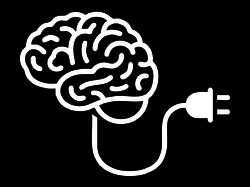Alex Klein has been on a roll with UX opportunities for AI. At UX Collective, he asks: will you become an AI shark or fairy?
The sharks will prioritize AI that automates parts of their business and reduces cost. These organizations smell the sweet, sweet efficiency gains in the water. And they’re salivating at AI’s promised ability to maintain productivity with less payroll (aka people).
The fairies will prioritize AI that magically transforms their products into something that is shockingly more valuable for customers. These organizations will leverage AI to break free from the sameness of today’s digital experiences–in order to drive lifetime value and market share.
No, they’re not mutually exclusive. But every company will develop a culture that prioritizes one over the other.
I believe the sharks are making a big mistake: they will commoditize their product precisely when its potential value is exploding.
A broader way to name this difference of approach: will you use AI to get better/faster at things you do already, or will you invent new ways to do things that weren’t previously possible (and maybe not just new “ways”—maybe new “things” entirely)?
Both are entirely legit, by the way. A focus on efficiency will produce more predictable ROI (safe, known), while a focus on new paradigms can uncover opportunities that could be exponentially more valuable… but also maybe not (future-facing, uncertain). The good news: exploring those paradigms in the right way can reduce that uncertainty quickly.
I think of four categories of opportunities that AI and machine learning afford, and the most successful companies will explore all of them:
Be smarter/faster with problems we already solve. The machines are great at learning from example. Show the robots how to do something enough times, and they’ll blaze through the task.
Solve new problems, ask new questions. As the robots understand their worlds with more nuance, they can tackle tasks that weren’t previously possible. Instead of searching by keyword, for example, machines can now search by sentiment or urgency (think customer service queues). Or instead of offering a series of complex decision menus, the machines can propose one or more outcomes, or just do the task for you.
Tap new data sources. The robots can now understand all the messy ways that humans communicate, unlocking information that was previously opaque to them. Speech, handwriting, video, photos, sketches, facial expression… all are available not only as data but as surfaces for interaction.
See invisible patterns, make new connections. AI and machine learning are vast pattern-matching systems that see the world in clusters and vectors and probabilities that our human brains don’t easily discern. How can we partner with them to act on these useful new signals?
Klein’s “sharks” focus on the first item above, while the “fairies” focus on the transformative possibilities of the last three.
That first efficiency-focused opportunity can be a great place to start with AI and machine learning. The problems and solutions are familiar, and the returns fairly obvious. For digital leaders confronting lean times, enlisting the robots for efficiency has to be a focus. And indeed, we’re doing a ton of that at Big Medium with how we use AI to build and maintain design systems.
But focusing solely on efficiency ignores the fact that we’ve already entered a new era of digital experience that will solve new problems in dramatically new ways for both company and customer. Some organizations have been living in that era for a while, and their algorithms already ease and animate everyday aspects of our lives (for better and for worse). Even there, we’re only getting started.
Sentient Design is my term for this emerging future of AI-mediated interfaces—experiences that feel almost self-aware in their response to user needs. In Big Medium’s product design projects, we’re helping our clients explore and capitalize on these emerging Sentient Design patterns—as embedded features or as wholesale products.
Companion/agent experiences are one novel aspect of that work, and Klein offers several useful examples of this approach with what he calls “software as a partnership.” There are several other strains of Sentient Design that we’re building into products and features, too, and they’re proving out. We’ll be sharing more of those design patterns here, stay tuned!
Meanwhile, if your team isn’t yet working with AI, it’s time. And if you’re still in the efficiency phase, get comfortable with the uncomfortable next step of reinvention.





